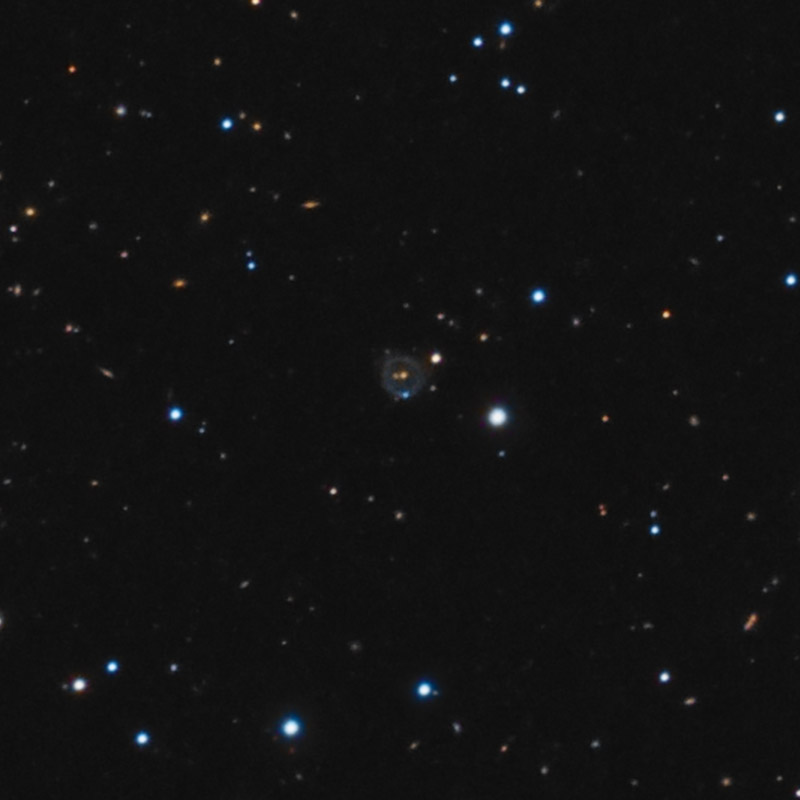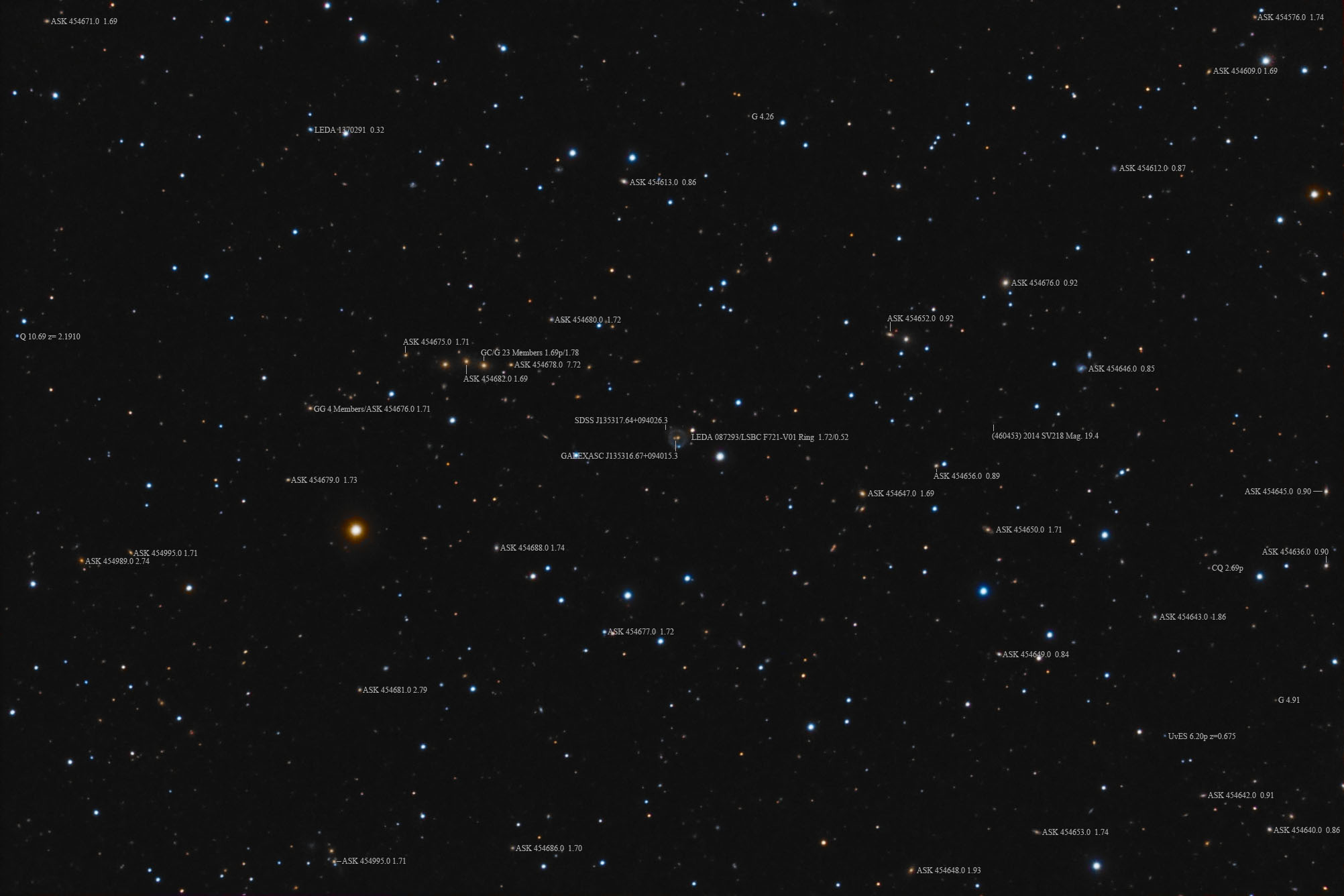| Description | Images |
Object name: PGC87293Designation(s): PGC87293, LEDA 087293 (also known as PGC 087293) is a strange ring galaxy in the southwest corner of Bootes. NED classifies it as, well, nothing, which I found surprising. Another catalog, the Low Surface Brightness Catalog lists it as a Ring galaxy but then things get confusing. Their position has an error bar radius of 37.5" but the position is about 45" from the galaxy's core. With nothing else looking like a ring it appears they are talking about the ring I imaged. Both LEDA and the LSBC have redshifts for it but again they can't agree. LEDA says 1.72 billion light-years while LSBC says only 520 million light-years, less than one third the distance. But then there seems to be a second galaxy within the ring. A fainter one is seen to the left of the central one. LEDA's position matches the brighter central one. Could it be that they really meant the fainter and possibly more distant one? The GALEX satellite records a UV source halfway between and slightly below the two "cores" but its error bar radius is 3" and thus can include both objects! It is closer to the faint galaxy. So which it means can't be determined. If the LEDA distance is used the ring is 250,000 light-years across. If the LSBC distance is used then it is only 75,000 light-years across. Neither NED nor SIMBAD shows an object at the position of the second core unless it is the GALEX object. Here I thought I was imaging a neat galaxy. I didn't realize I was actually imaging a can of worms. Related Designation(s):2MASS J13531637+0940176, ASK 454684.0, LEDA 087293, MAPS-NGP O_499_0291596, PGC87293, SDSS J135316.39+094017.5, [TTL2012] 572880, |


